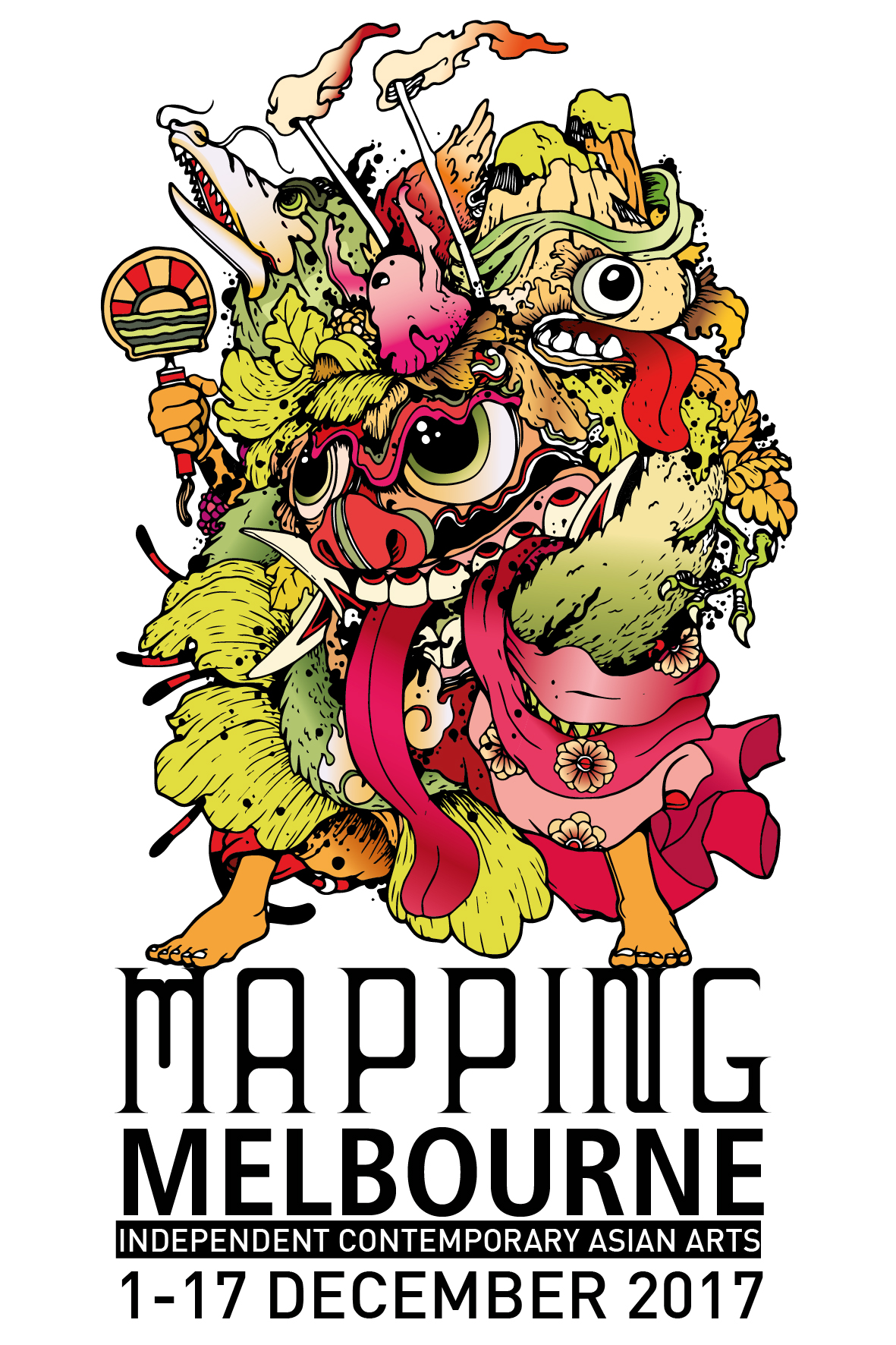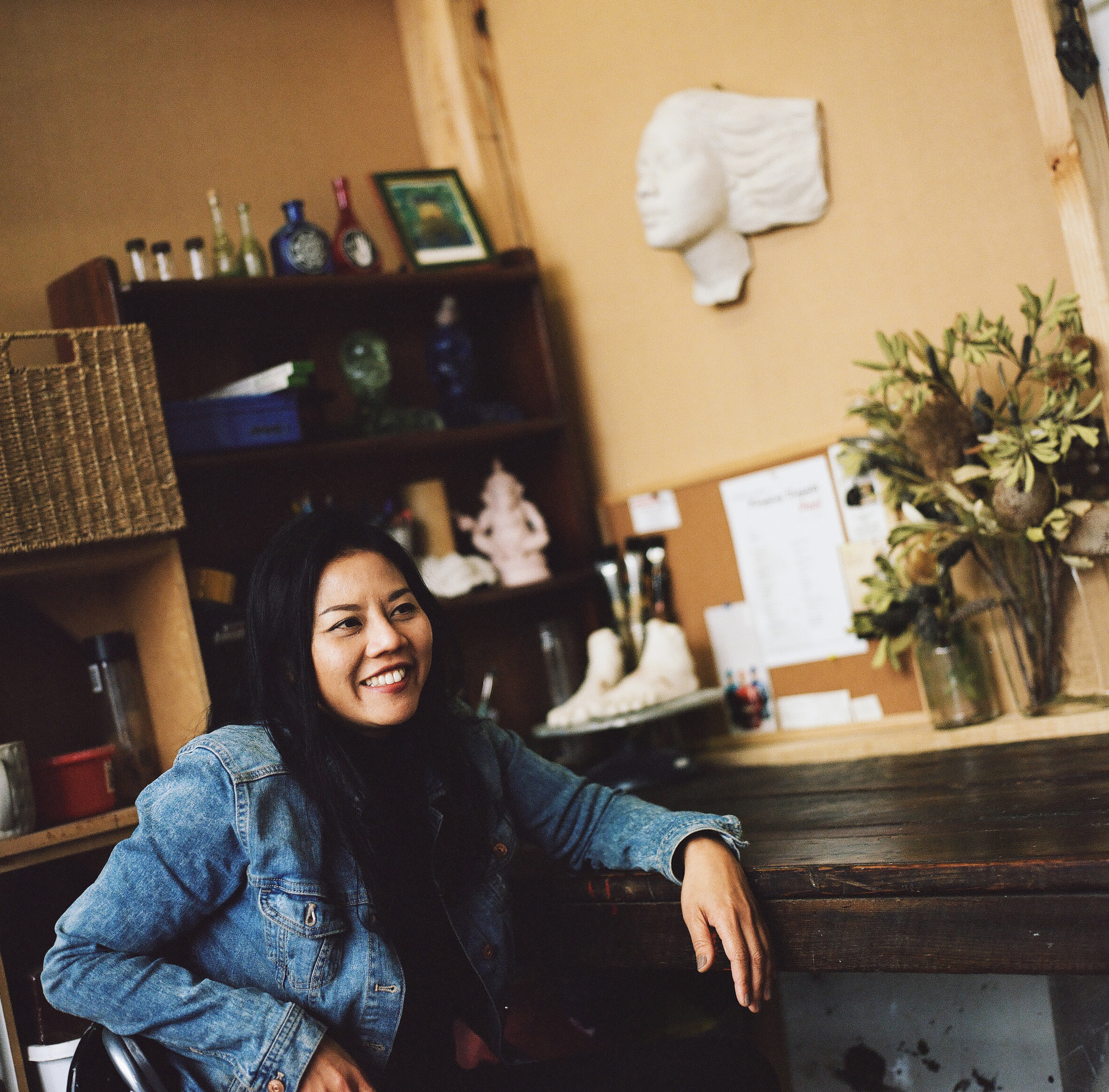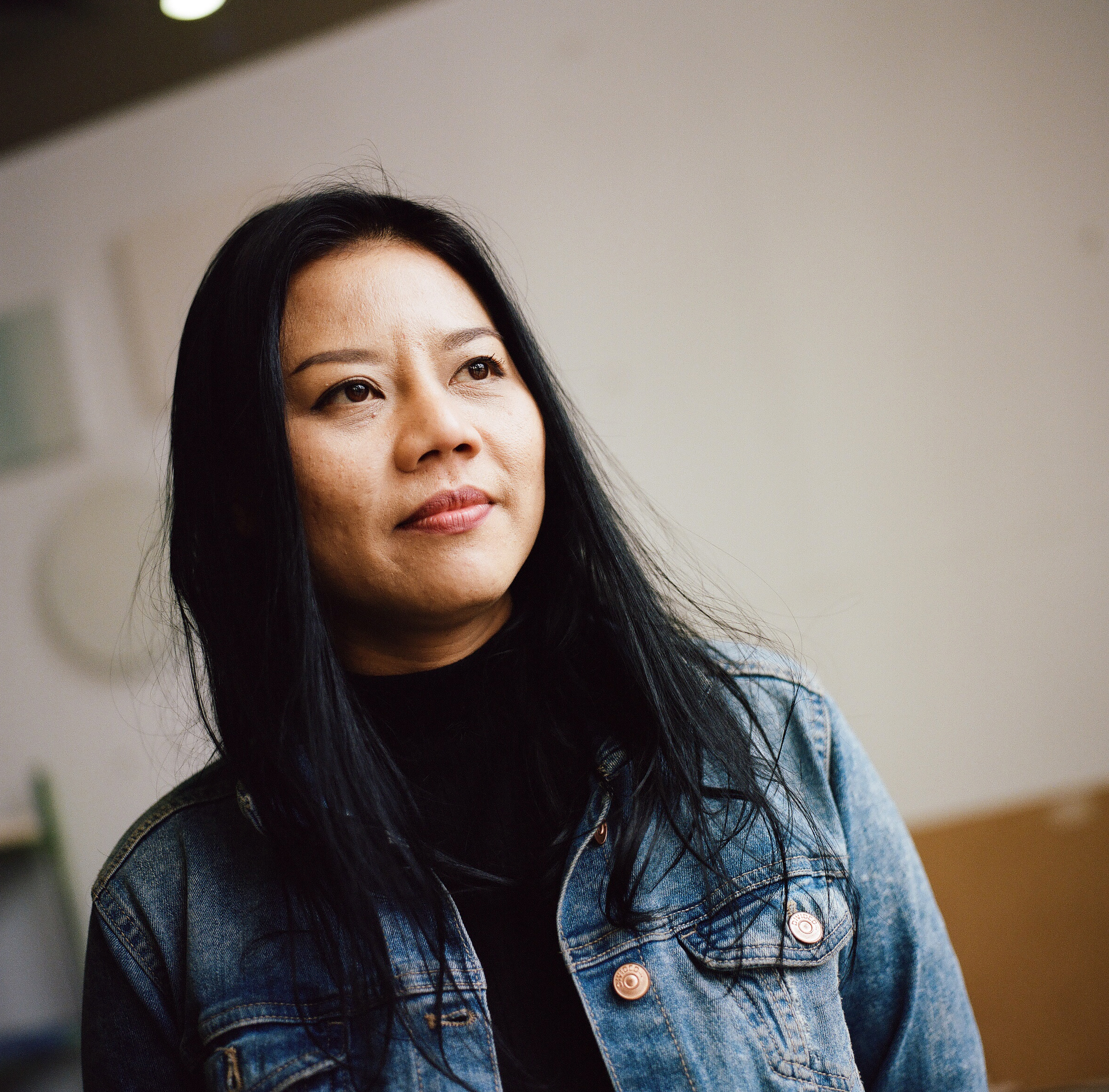Interview #35 — Pimpisa Tinpalit
Iby Natasha Kaminaga
Originally from Thailand and now based in Melbourne, Pimpisa Tinpalit creates sculptures which examine the dynamics and relationships between people.
Pimpisa speaks to Natasha Kaminaga about sculpture as meditation, listening to one's instincts, and finding time to create.
This interview has been created in partnership with Mapping Melbourne. Pimpisa will be showing 'Peel', alongside Yumemi Hiraki and Leah Jing McIntosh in their exhibition 'Reflection' at No Vacancy, from December 5-17. Event here.
You’ve worked as a sculptor for over fifteen years, showcased your work in exhibitions across Thailand, Japan, Singapore, Hong Kong and America. How did you get to this point? What challenges have you faced?
I think it’s probably because I’ve never stopped creating art and I continue to challenge myself to create and push myself to hit new goals. Equally I feel like there have been opportunities which I’ve grabbed and run with them. In that sense then, I’m probably lucky to have these opportunities as well as to be surrounded by so many creative people whole my life, sharing ideas, discussions and opportunities in art. The challenges that have faced me have never been something in my environment or someone stopping me. The challenge for me has been mainly to find the right the place at the right time—to put myself in a place where opportunities arise and grab them. Of course I’ve had many personal challenges along the way and all of these inform the art in an unconscious way.
Many of your works feature otherworldly beings merged with human characteristics. What do these surreal creatures represent for you?
My artwork is inspired by my real life experiences—expressing emotions I have felt, the times I have been through, my feelings and my sense of self. The sculptures are more a reflection of these emotional states as I bring them to life, recorded through my sculptures.
Working in sculpture, your art is quite tangible; it takes up physical space and has literal weight in a way that other art forms do not. How did you come to sculpt? Why do you choose this form?
I grew up in a very artistic family and had the privilege to try many mediums since I was very young. I knew by the time I was nine years old that I had found my medium and that I wanted to be a sculptor. Since then I have never stopped and I’m still practicing my art. I just fell in love with the texture when I first touched the fine clay and left my first fingerprints on my work. I still feel after all these years that sculpture is the best form for me to explore my ideas.
You emphasise the viewers’ imagination as something you want to engage with through your work.
I think most art is about exercising the imagination muscles in the viewer. Some might have a specific view that they are trying to get across but for me and many others once the art passes from private to the public sphere then by its nature it’s up to each viewer to find what they find in it.
What is the impetus for your latest project, Peel, part of the Mapping Melbourne exhibition ‘Reflection’?
For me ‘Peel’ is a consideration of self-reflection within the Buddhist philosophy. It engages the viewer with opulence and dynamic flow.
Describe your creative practice. What does the journey from inspiration to final product look like?
There is no formula in my art process. When I feel it’s done it’s done, it feels like instinct to me. For Peel specifically, I’m concerned about the meaning of objects and colour on this series. For example the feet represent a journey, and the ladder is life. But because the works occupy space, it’s just as important to think about how the work engages with environment and space in the gallery. I’ll always check the space first before I start because those are my confines, because I create in three-dimensional work.
What does a ‘usual’ day look like for you? How do you work?
Most days I have to manage my own gallery, The Black Cat, and then only in the evenings and my days off do I get to work on my sculpture in studio, I have to be flexible and find time to create where I can.
What has inspired you lately?
I always find new inspiration when I finish a show. I’m always aspiring towards a greater minimalism. I don’t have the sense of fulfilment about my own work that allows me to stop changing, to stop learning. It’s never ending.
Is there anything that you are working on that we can look forward to seeing?
I have a group show for Mapping Melbourne Festival coming up in Dec this year at No Vacancy Gallery and and I’m pretty excited about being a finalist of Biennale of Australian Art (BOAA) in Ballarat next year.
Do you have any advice for emerging artists?
If you chose to live the artist life then listen more, speak less and work hard.
Let your work present itself. Your art work will present how good you are.
Focus and keep going but do not keep doing the same thing all the time, keep adapting and trying new things.
Who inspires you?
I’m always looking for inspiration. When I first began thinking sculpturally, Gorge Segal was fundamental to my development. My idol is Louise Bourgeois. I also have a passion for Frida Kahlo, and Ron Mueck and photographers like Jerry N. Uelsmann.
What are you currently listening to?
I love to listen all old school eighties songs because that’s the sound that I grew up in.
What are you currently reading?
Wabi-Sabi for Artists, Designers, Poets & Philosophers, by Leonard Koren.
How do you practice self-care?
Sculpting is mediation for me. It makes me reflect, focus and concentrate and for me that’s pretty damn important.
What does being Asian-Australian mean to you?
As artists I feel like we are all the same. It is what it is. We just need to open the window and let the wind come through to refresh the air. Which means we should open our minds and exchange ideas, and everything will be alright.
find out more
Interview by Natasha Kaminaga
Photographs by Leah Jing McIntosh






